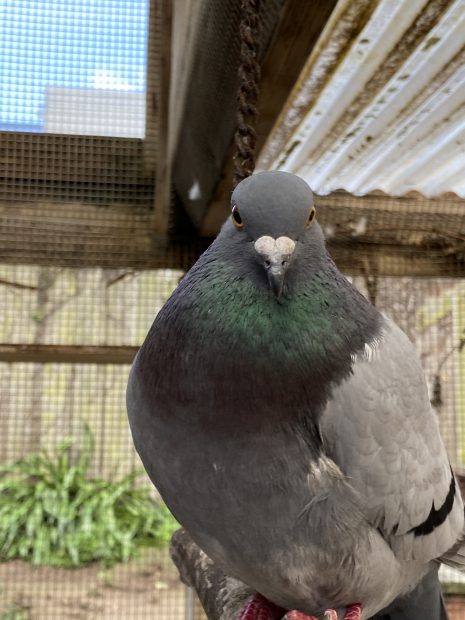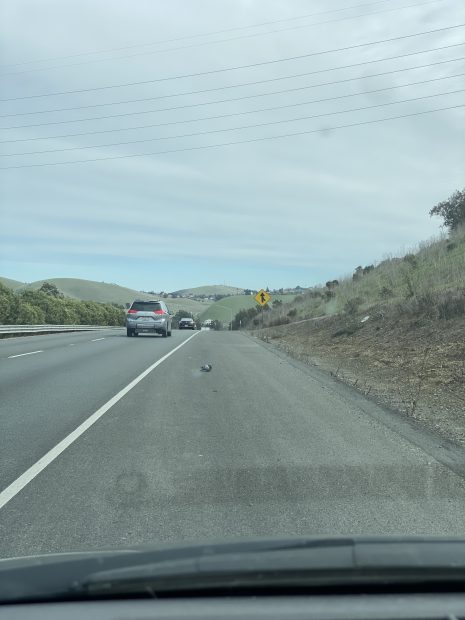
I circled back to pick up this pigeon stranded next to the freeway
February 16th, I was on my way to adopter Cynthia’s home in Benicia to help her and care coordinator Jill set up an emergency aviary for 15 dumped Roller pigeons Cynthia had rescued. I was late and traveling too fast to pull all the way over when I saw a pigeon standing motionless on the shoulder. I know that posture means help is needed and so I took the next exit and circled back, hoping she’d still be alive when I came back around.
I was relieved to find her and took this quick photo from the driver’s seat before going to grab her. She was standing motionless, hunched, both eyes closed and bloody, passing cars ruffling her feathers. I came up quietly, brought both hands close around on either side of her and then grabbed fast and hung on. Sometimes a pigeon needing rescue is too weak to even try to get away but not always. I knew she might rocket out of my grasp if I didn’t get a good hold and I was right. As soon as my hands closed around her, she exploded into a launch but I held on and got her into the car. I felt terrible grabbing and scaring her but had to to help her. Despite the burst of strength, she was badly hurt and I called Medical Center for Birds to ask if they could please fit another bird into their already booked solid schedule. They said, Yes and when I texted Cynthia and Jill they said, Go!
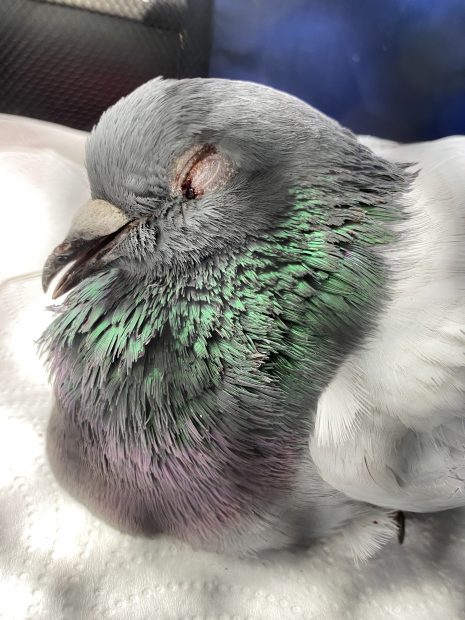
Safe in the car but badly hurt
Medical Center for Birds needed a name and I dubbed her Hank. (I’ve since refined it to Hanks.) I wasn’t sure she’d survive the 45 minute drive but she did. Dr. Tino Luehman met us in the parking lot and took her in (socially distanced vetting). Later that evening, Dr. Luehman let me know that Hanks had a lacerated crop in addition to the head trauma. That wound was a couple of days old and perhaps is what had weakened Hanks, resulting in her being clipped by a passing car. Despite the injuries, Hank was “overall doing better quicker than expected” (thanks to emergency hospitalization with subcutaneous fluids, injected anitbiotics and pain meds funded by our donors). Dr. Luehman sent me this encouraging photo.
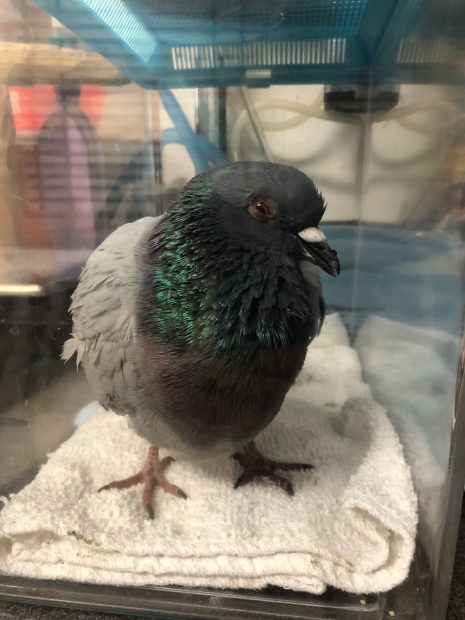
Hanks hospitalized and feeling a little less terrible
We received this update the next day: “There is a necrotic area about the size of a quarter, which has a tail in it that runs up the left side of his neck. That is not perforated, but is necrotic. I was watching his crop contract and was able to get the sucralfate into the thoracic esophagus as planned and dropped some carnidazole in the hole while i was there. We sutured tegaderm on to make a longer term patch, but he is going to be one of the crop kids that we need to let everything declare what lives and what dies before trying to close. At present, we have at least I think facilitated delivery of nutrition. He seems to have relied on people somehow, because he was full of corn and sunflower seeds.
This morning he was standing and more alert. We are going to start gavaging in a little while, but we are volume limited because the biggest part of the hole is in a gravity dependent area so I can’t distend him. Once he is self-feeding on seed it will be less of a concern.”
On February 20th, Dr. Holly Galusha repaired Hanks’ torn crop and sent this update: “Just finished! He did great as predicted with sedation. His skin closure is a little tight, but we know how to let those heal in if they are a little shoddy. His crop closure went swimmingly, but he was starting to popcorn a little with the skin so the goal was function vs. aesthetics.”
Still hospitalized on the 22nd, Hanks was restless and not eating much so she was discharged. I brought back home with me for supportive foster care, expecting that being out of the hospital setting and surrounded by happy pigeons, she’d do better. And it worked. She started eating in the car on the way home.
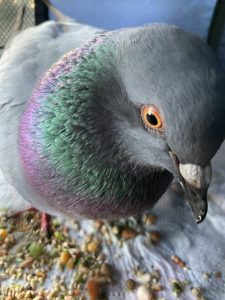
Pigeons love being discharged from the hospital
In my bird room, Hanks did a great job of eating and pooping but otherwise was extremely subdued. While her eyes looked good, she behaved as if she was blind. Though eating like a champ, Hanks was otherwise shut down for a week. I worried about brain trauma and how much, if at all, she’d recover. I kept her life simple and safe. She had time in the sunshine and fresh air. She spent some time at my side while I worked but all the while stayed very much locked in to herself. She hated being handled and so I refrained.
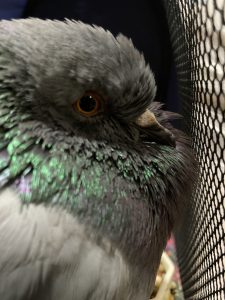
Hanks spent a couple of days just quietly staring
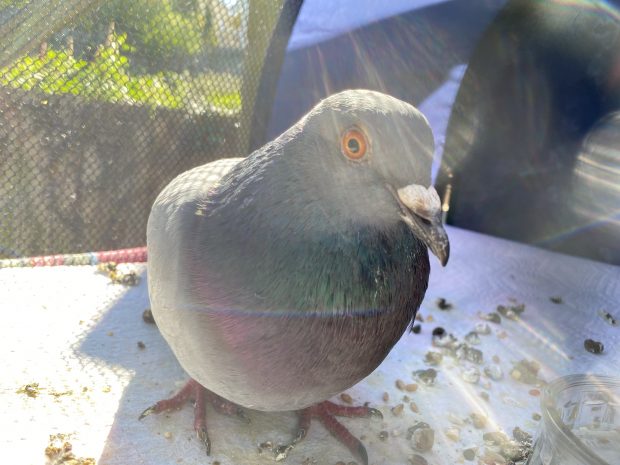
Sunshine feels good
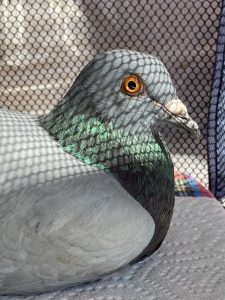
Staring…
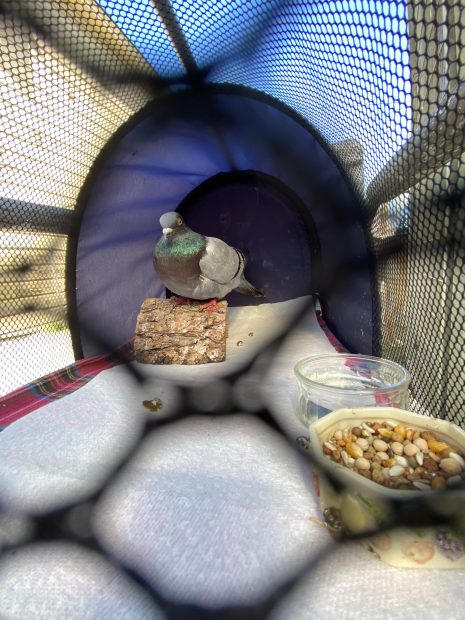
Subdued and unresponsive to the flock of pigeons cooing next to her
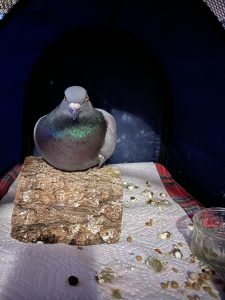
Still just eating, pooping & staring 2/27
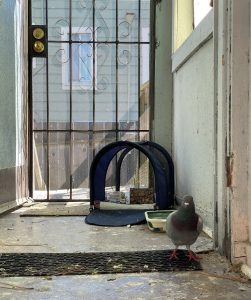
And then, on 3/1, Hanks started to engage
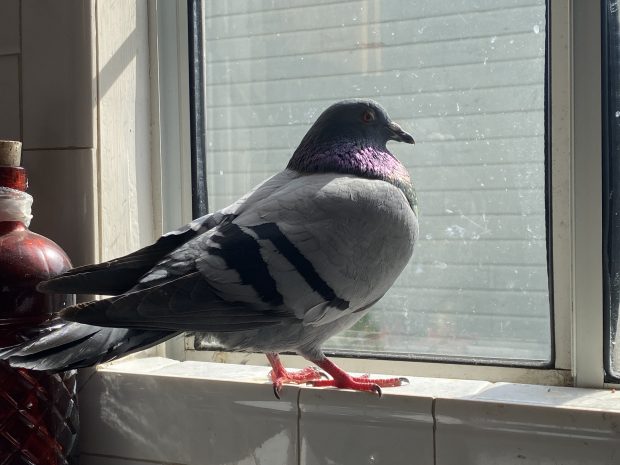
On 3/3, Hanks spent some time on the window sill watching pigeons outside
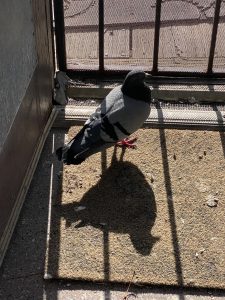
3/4, exploring more & managing bird room bird interactions
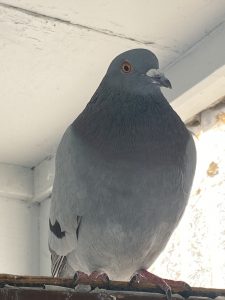
On 3/5, Hanks was flying to high perches
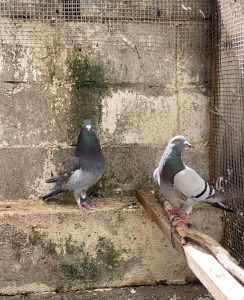
Bachelor Miles welcomed Hanks on her first aviary visit 3/5
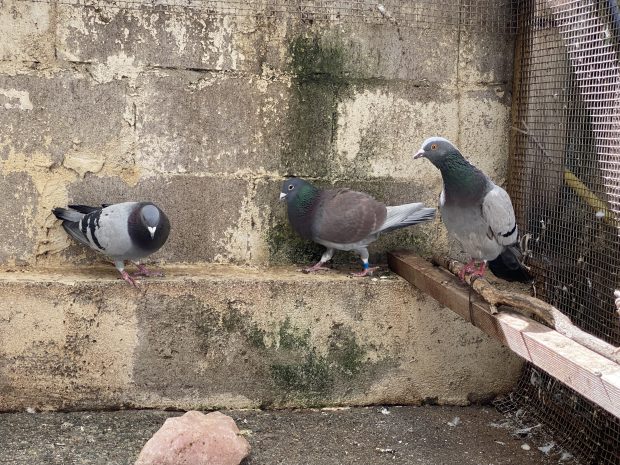
Married man Revali got in on the flirting too
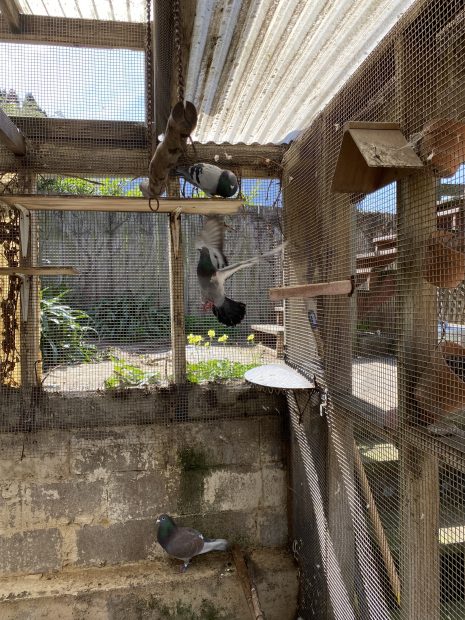
I cleaned in the aviary while supervising Hanks’ outing
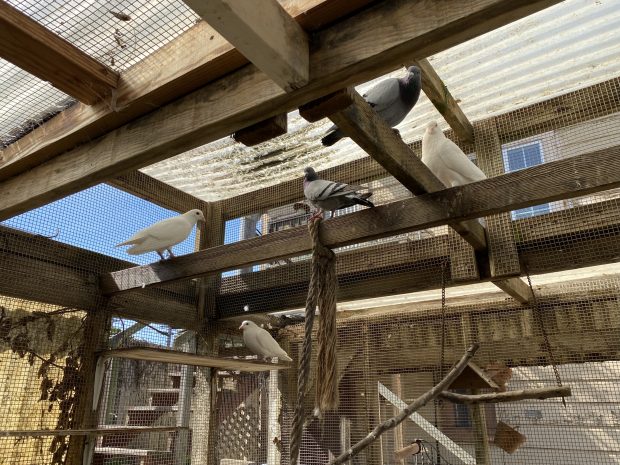
That’s Hanks in the center of the penthouse perch!
After a couple of exciting hours in the aviary, I brought her back in the bird room to rest, eat and sleep and she settled in for a quiet night and probably lots of dreams. The next morning, Saturday 3/6, I brought her back outside to the aviary and she neatly landed on a small swinging perch that’s a good place for a bird who wants a little distance from flirty guys.
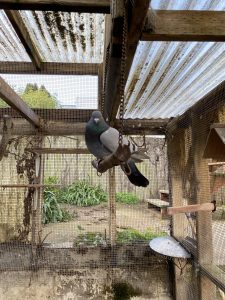
Hanks’ second aviary outing
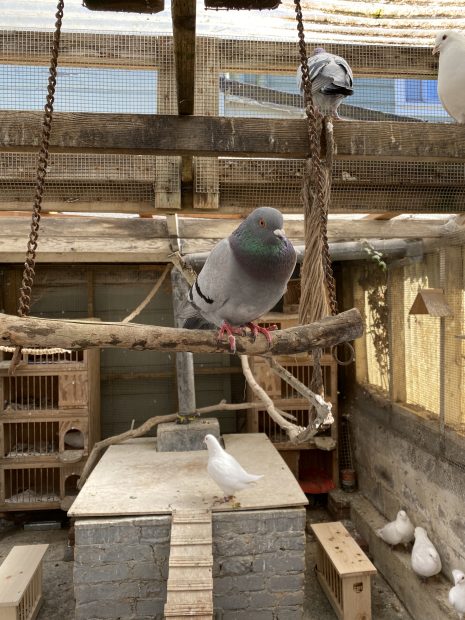
Hanks did fine but was quiet
She did fine but seemed subdued and so I brought her in early. It was the right thing to do. She immediately flopped down to relax and nap.
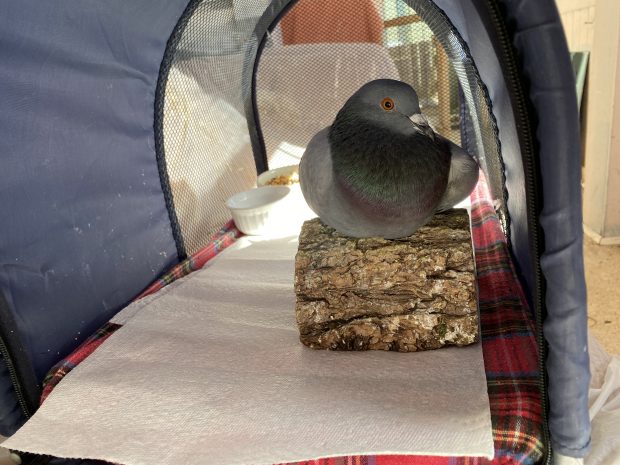
Wore out from all the adventure
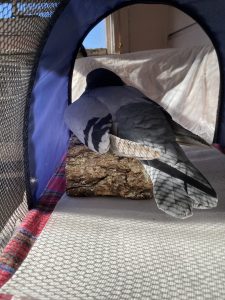
Napping
Today, Sunday, she still seemed quiet so I left her to relax in the bird room and she took her first bath since being rescued. I don’t want to rush her and have her overdo it. She’s survived a traumatic brain injury. It’s been amazing to witness Hanks’ recovery. She’s gone from being functionally blind and still as a stone to able to fly and wrangle flirty pigeon guys.
When I pulled over and rescued feral pigeon Hanks, I worried that, if she survived, she might be permanently blind and unreleasable. Today, she can definitely see with her right eye but I’m not sure she can see from her left. If she does fully recover, we’ll return her to her flock to live wild and free. If not, we’ll foster with the accomodations she needs until placing her in the right forever home. Hanks’ life matters to her just as ours matters to us. Our souls are all the same, doing the best we can in the bodies we’re given to live in this big, hard, beautiful world. Hanks thanks you and Palomacy does too. Together we have saved her life.
